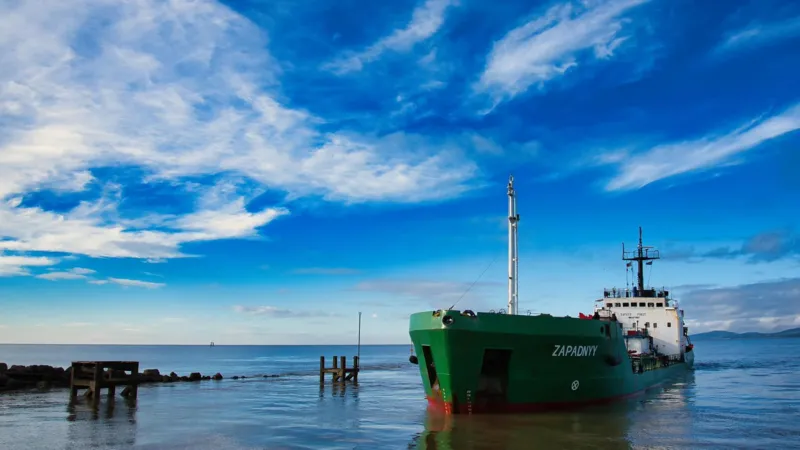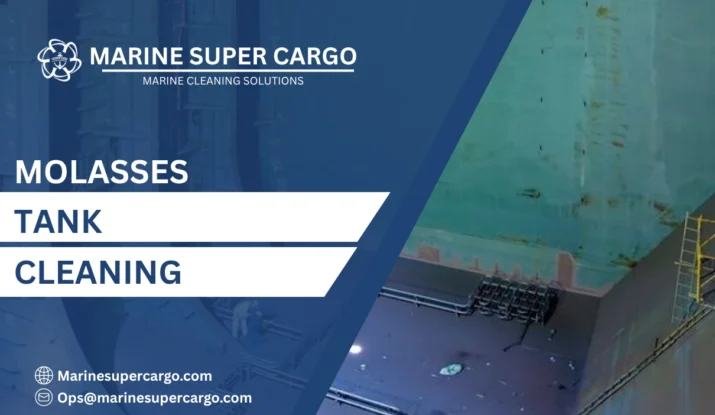Molasses tank cleaning presents unique challenges requiring specialized techniques and extensive experience in handling viscous cargo residues. These highly adhesive substances create stubborn films throughout cargo spaces, demanding innovative approaches for effective removal. Marine Super Cargo delivers comprehensive molasses tank cleaning services utilizing industry-proven methods that ensure efficient operations while maintaining vessel integrity and cargo quality standards.
Understanding Molasses Tank Cleaning Challenges
Molasses and similar sticky cargoes—including treacle, golden syrup, and high-fructose corn syrup—possess exceptional adhesive properties complicating standard washing procedures. The viscous nature of molasses tank cleaning operations requires elevated temperatures and prolonged contact times for successful residue removal from all surfaces throughout port and starboard sections.
These sugar-based products crystallize and harden when temperatures drop, creating layers that bond tenaciously to bulkheads, deck heads, frames, and heating coils. Effective molasses tank cleaning demands understanding product characteristics and implementing appropriate strategies. Marine Super Cargo technicians assess each molasses tank cleaning requirement based on cargo specifications and vessel conditions.
Critical Temperature Control in Molasses Tank Cleaning
Temperature management forms the cornerstone of successful molasses tank cleaning operations. Molasses viscosity decreases dramatically with heat application, transforming from semi-solid deposits into flowable liquids. Maintain cargo tank heating systems at 60-75°C throughout molasses tank cleaning phases for optimal results.
Cold weather operations require additional heating duration during molasses tank cleaning. Ambient temperatures affect tank steel temperatures, requiring compensation through extended pre-heating cycles. Marine Super Cargo implements comprehensive thermal management protocols throughout every molasses tank cleaning project.

Step-by-Step Molasses Tank Cleaning Procedures
Initial Stripping and Drainage
Begin molasses tank cleaning by stripping maximum cargo quantities using deepwell pumps or eductors. Heat tanks adequately before stripping operations commence. Drain all cargo lines, manifolds, and associated piping systems from bow to stern sections. Remove as much product as possible before washing begins, reducing molasses tank cleaning duration significantly.
Hot Water Pre-Wash Cycle
Introduce hot water at 75-85°C through tank cleaning machines during initial molasses tank cleaning cycles. Position machines strategically covering all tank surfaces including structural members, frames, and longitudinal stiffeners throughout port and starboard areas. This preliminary molasses tank cleaning phase dissolves surface layers and loosens adherent deposits.
Chemical Application for Enhanced Cleaning
Apply specialized cleaning chemicals formulated for sugar-based residue removal during molasses tank cleaning operations. Alkaline degreasers and emulsifiers break down sticky films effectively when combined with heat. Allow adequate contact time—typically 3-4 hours—for chemicals to penetrate and dissolve stubborn deposits during molasses tank cleaning phases.
Select chemicals compliant with IMO MEPC environmental guidelines. Biodegradable formulations minimize environmental impact while delivering effective cleaning performance. Proper chemical selection accelerates molasses tank cleaning significantly compared to water-only methods.
High-Pressure Hot Water Washing
Execute high-pressure washing using heated seawater or freshwater during intensive molasses tank cleaning stages. Direct spray patterns toward tank corners, frames, and areas where residues accumulate persistently. Pressure washing combined with elevated temperatures removes even the most adherent sticky deposits during thorough molasses tank cleaning operations.
Pay particular attention to heating coils, structural supports, and expansion joints where molasses concentrates. These areas require focused attention during manual inspection phases of molasses tank cleaning procedures.
Manual Cleaning and Final Inspection
Following automated washing, crews wearing appropriate personal protective equipment conduct detailed manual inspections. Access all compartments checking for remaining sticky residues on bulkheads, frames, and difficult-to-reach areas. Remove stubborn deposits using approved hand tools, brushes, and cleaning materials during final molasses tank cleaning verification.
Marine Super Cargo ensures comprehensive surface examination throughout every phase, guaranteeing tanks meet required cleanliness specifications before surveyor inspection and certification.
Best Practices for Efficient Operations
Sequential Heating and Washing
Implement sequential heating and washing cycles rather than single extended operations. Multiple shorter cycles prove more effective than prolonged single washes for sticky cargo removal. This approach optimizes energy consumption while enhancing cleaning effectiveness throughout operations.
Freshwater Final Rinse
Complete operations with thorough freshwater rinsing removing all chemical residues and dissolved sugars. Sugar residues left on surfaces promote corrosion and microbial growth if not completely removed. Adequate freshwater supplies prove essential for successful final rinsing during sticky cargo removal operations.
Ventilation and Drying
Ensure proper ventilation throughout cargo spaces after washing completion. Adequate airflow accelerates drying, preventing moisture retention that encourages corrosion. Install portable ventilation equipment ensuring circulation from multiple access points throughout port and starboard sections.
Equipment Maintenance
Maintain tank cleaning machines, heating systems, and pumping equipment regularly. Clogged nozzles reduce effectiveness significantly. Inspect and clean equipment between operations ensuring optimal performance during subsequent projects.
Regulatory Compliance and Environmental Considerations
Sticky cargo washing generates sugar-rich effluent requiring proper handling. Discharge operations must comply with local port regulations and environmental standards. Many jurisdictions require shore reception for initial high-concentration washings during operations.
Document all activities in the Cargo Record Book maintaining records for regulatory inspections. IMO guidelines emphasize proper waste management from all cargo operations. Marine Super Cargo ensures complete compliance throughout all sticky cargo handling projects.
Common Mistakes to Avoid
Never commence washing without adequate pre-heating. Insufficient temperatures result in incomplete residue removal and extended operation duration. Avoid using cold water during any phase—temperature maintenance proves critical for success.
Don’t rush final inspection phases. Thoroughness during manual verification prevents re-cleaning requirements later. For additional specialized cleaning insights, reference our guide on vegetable oil tank cleaning addressing temperature-sensitive cargo handling.
FAQs About Molasses Tank Cleaning
Q1: Why is temperature so critical during molasses cleaning?
Heat reduces molasses viscosity dramatically, transforming sticky residues into flowable liquids that wash away easily during operations.
Q2: How long does complete cleaning typically require?
Operations typically require 36-60 hours depending on tank size, residue quantity, and heating system efficiency.
Q3: Can seawater be used for washing operations?
Yes, heated seawater effectively removes molasses, though freshwater final rinses prevent salt deposits and corrosion issues.
Q4: What chemicals work best for sticky cargo?
Alkaline degreasers and biodegradable emulsifiers formulated specifically for sugar-based residues deliver optimal results.
Q5: Is special equipment needed for molasses operations?
Standard tank cleaning machines work effectively when combined with adequate heating systems and high-pressure pumping capabilities.
Trust Marine Super Cargo for expert sticky cargo solutions ensuring efficient, compliant, and thorough tank preparation.


